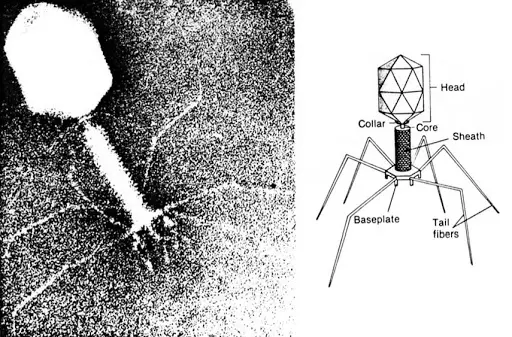
Viruses are the most numerous biological objects on our planet. And the number of bacteriophages, also known as phages - viruses, infecting bacterial cells and archaeys, according to scientists' estimates, is 1031 particles. They strongly affect the microbial communities, acting as horizontal gene transfer vectors encoding auxiliary functions, useful for types of bacteria-hosts.
For decades, researchers have suffered phages not as fast as they wanted, however, due to the emergence of a high-performance metagenomyle, it became possible to detect an unprecedented number of new phages. Thus, the unexpected discovery was that the majority of phage sequences could not be attributed to any known viral taxonomy established by the International Committee on Virus Taxonomy (ICTV).
It is known that phages affect various ecosystems, and given the importance of the composition and functions of the intestinal microbioma for human health, increasing attention began to devote to the phages inhabiting this body. The imbalance in the aggregate of bacteria leads to the development of many diseases and complex states, such as allergies and obesity. However, until now, we knew relatively little about the role that intestinal bacteria and bacteriophages play in health and human diseases.
Scientists from the laboratory of interaction between the host and microbiota at the Institute of Senger and the European Institute of Bioinformatics (United Kingdom), applying the DNA sequencing method made a catalog of biodiversity of viral species discovered in 28,060 sets of human intestinal genomes collected in 28 different countries in six continents (Africa, Asia , Europe, North America, South America and Oceania), and 2898 genomes of bacterial isolates, which raised from this abdominal organ. The results of their work are presented in Cell magazine.
Scientists have discovered 142,809 genomes of the phages living in the intestine of a person, more than half of whom have ever met before. Viral diversity turned out to be the highest among such a type of bacteria as firms. At the same time, about 36% of viral clusters were not limited to one type, creating network streams of genes between phylogenetically different types of bacteria.

Among tens of thousands of viruses, scientists have identified a new widespread set of phages with characteristics resembling Crassphage bacteriophage, discovered in 2014 in the wastewater of many countries. This group infecting gram-negative anaerobic bacteria bacteria of the Bacteroidaceae family was called Gubafag. And, according to experts, she and Crassphage - a common ancestor.
"We also observed a clear separation between the Fagoms of the inhabitants of North America, Europe and Asia and samples from Africa and South America. Interestingly, Fagioma patterns (a set of sequences of all phage genomes in the sample. - Ref. Ed.) Correlated with important differences in the lifestyle of a person. And the phages found in urban samples were aimed at bacteroids, but not on the bacteria of the prevotellacea family, whereas in rural samples from Peru, Tanzania, Madagascar and Fiji contained phages with a range of owners aimed at Prevotellaceae instead of Bacteroides, "scientists told.
According to them, the resulting high-quality large-scale catalog of genomes of phages will improve future studies of virus - the virus component of the intestinal microbioma - and will make it possible to ecological and evolutionary analysis of human intestinal bacteriophages.
"It must be remembered that not all viruses are harmful: they are an integral component of the intestinal ecosystem. Most of the viruses that we revealed have DNA as a genetic material, that is, differ from the well-known pathogens, such as Coronavirus SARS-COV-2 or the Zika virus, which are RNA viruses. Secondly, our samples were obtained mainly from healthy people who do not have any specific diseases, "said Dr. Alexander Almeida, one of the authors of the study.
Source: Naked Science
